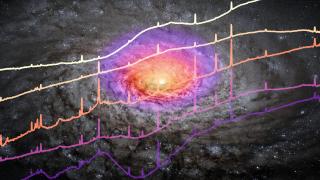Bibcode
Walsh, Jeremy R.; Monreal-Ibero, Ana
Bibliographical reference
Galaxies
Advertised on:
4
2020
Citations
7
Refereed citations
7
Description
The Multi-Unit Spectroscopic Explorer (MUSE) is a large integral field unit mounted on the ESO Very Large Telescope. Its spatial (60 arcsecond field) and wavelength (4800-9300Å) coverage is well suited to detailed imaging spectroscopy of extended planetary nebulae, such as in the Galaxy. An overview of the capabilities of MUSE applied to Planetary Nebulae (PNe) is provided together with the specific advantages and disadvantages. Some examples of archival MUSE observations of PNe are provided. MUSE datacubes for two targets (NGC 3132 and NGC 7009) are analyzed in detail, and they are used to show the advances achievable for planetary nebula studies. Prospects for further MUSE observations of PNe and a broader analysis of existing datasets are outlined.
Related projects

Nuclear Activity in Galaxies: a 3D Perspective from the Nucleus to the Outskirts
This project consists of two main research lines. First, the study of quasar-driven outflows in luminous and nearby obscured active galactic nuclei (AGN) and the impact that they have on their massive host galaxies (AGN feedback). To do so, we have been granted time with the Gran Telescopio CANARIAS (GTC) in the optical and near-infrared ranges
Cristina
Ramos Almeida